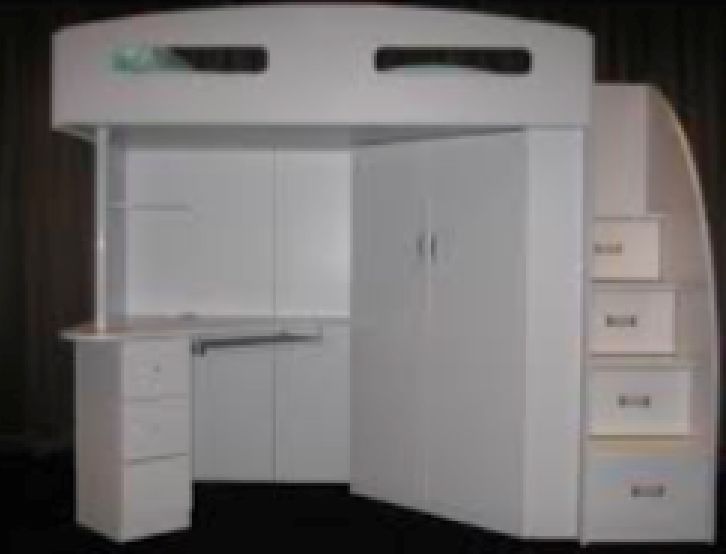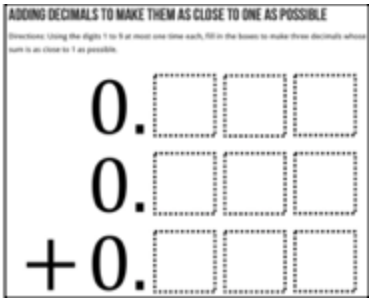In our family home, my son has a very small bedroom. One day I discovered the Octavia desk bed. After a bit of measuring up, I was convinced that this second-hand colossal conglomeration of bed, desk, drawers and wardrobe would solve the spatial challenges that he faced each day. I drove out to the house to pick it up, naively unaware how unprepared I was for the ordeal. It took me three hours to disassemble the unit, two return trips in the (borrowed) station wagon and a sizable chunk of my weekend to reassemble it. It was a trying and time-consuming endeavour. I made mistakes, I grappled with self-doubt, I struggled. It was only just ok... Despite these hardships, the main thing I remember is the enormous sense of achievement I felt, in spite of the difficulties I had.
The Octavia experience helped me crystallise Vygotsky’s zone of proximal development (ZPD), which recognises that learning happens when humans undertake challenges that lie just within reach of their capabilities. If a small group of us met, there would be some people like me, for whom the Octavia would be an example of such a challenge. Others in our group would routinely complete the task minus the ordeal that I described above. For them, assembly of the Octavia equates to a bit of ‘brushing up’ of their previously held knowledge and skills. For us toilers, the payoff can be much higher as we will have been given the opportunity to acquire a broader set of new knowledge and skills.
If we are to maximise learning opportunities for our students we need to make challenge the new normal in our classrooms. To do this, we not only need access to challenging tasks, but also the capacity to be able to adjust the task to ensure that it presents obstacles to all students. As the Octavia ordeal shows, a problem is only a problem for a person when the task presents obstacles that are not instantly or routinely solvable.
The second factor for maximising the potential for learning is time. We must allow - no direct our students to spend time on problematic tasks. When students struggle, yet persevere, with obstacles contained within a problem, they gradually build what Kilpatrick (et al) calls productive dispositions: ‘the tendency to see sense in mathematics, to perceive it as both useful and worthwhile, to believe that steady effort in learning mathematics pays off, and to see oneself as an effective learner and doer of mathematics’. This is a process that takes time. It will probably be quite new for your students to spend a whole lesson responding to a well-constructed single problem (Dan Meyer calls it patient problem-solving) and it will take time for your students to understand that maths has nothing to do with speed.
The third factor is justifying this time spent on the task. If we want our students to persevere with a problematic task, it is only fair that we provide them with a justification (or ‘so what?’) for time spent on the task. Adults understand that not all of the tasks that we have to do are stimulating. This simply doesn’t apply to school mathematics. There is no reason why we can’t make every mathematical lesson stimulating and purposeful. Having a clear ‘so what?’ does not mean that every task has to have a ‘real life’ application a la the Octavia. Students recognise phoney ‘real life’ problems. Idle threats about needing to know content before next year’s class don’t qualify as a meaningful ‘so what?’ either. I learnt the hard way that this does not effectively motivate students or foster a lifelong love of mathematics. So what qualifies as a decent justification for learning?Luckily for maths teachers, humans love solving problems, as evidence by our fascination with puzzles, crosswords, riddles, even video games. A stimulating context in the form of a puzzle can be enough of a ‘so what?’
Which of these tasks is more likely to:
- provide obstacles that are not instantly solvable,
- encourage students to spend time on the problem and
- generate a stimulating context (or a ‘so what?’) for learning?
|
The task on the right is sourced from Robert Kaplinsky’s Open Middle. |
|
A puzzle is just one of the legitimate and creative ways we can reimagine mathematical content to stimulate interest and provide obstacles for students to overcome. If you are seeking inspiration in this space, Robert Kaplinsky’s Open Middle is an excellent place to begin your search.
Amongst the numerous benefits of going through the hassle of finding challenging tasks amongst a haystack of lower-order, procedural tasks in the world, it is arguably the changed dispositions of our students that is the biggest reward. A former lecturer of mine, John Munro, told us that ‘learning is changing your mind’. This bit of wisdom which is increasingly supported by neuroscience has stayed with me. I am convinced that our main job as maths teachers is the pursuit of changing our students' minds not just towards maths, but in their own appreciation of what they are capable of.
In the spirit of changing minds, I’d be interested to hear your thoughts on what is worth doing and what is worth knowing in the maths classroom.


